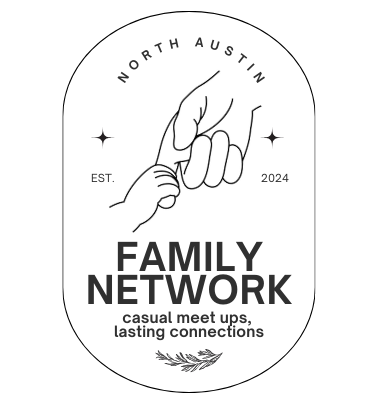Ever feel like your living room is bursting with toys, but your child still says, “I’m bored”? That’s where toy rotation comes in. Rotating toys means setting out just a handful at a time while storing the rest. Every few weeks, you swap them out. The result? Less clutter, longer attention spans, and toys that feel “new” again.
This tip is universally recommended by parents of the North Austin Family Network, and we all do it differently. Recently, one of our board members Shelby shared a guide that she uses to help rotate the toys and our parents thought it was so smart!
Here’s our simple guide for choosing what to rotate:
🧠 Cognitive Development
What? Puzzles, stacking rings, shape sorters.
Why? These toys build memory, problem-solving skills, and early math concepts like size, order, and pattern recognition.
🏡 Small World Pretend Play
What? Dollhouses, train sets, animal figurines.
Why? Pretend play helps kids process daily life, stretch their imaginations, and develop social understanding.
✋ Fine Motor
What? Bead mazes, stacking cups, lacing cards.
Why? Strengthens hand-eye coordination and finger control — essential for writing, self-feeding, and dressing.
🎭 Role Play
What? Dress-up clothes, play kitchens, doctor kits.
Why? Encourages empathy, communication, and confidence by acting out real-life roles.
🧩 Manipulative Toys
What? Blocks, Magnatiles, Duplo.
Why? Open-ended building supports patience, creativity, and spatial reasoning.
🌈 Sensory Play
What? Playdough, water tables, textured toys.
Why? Hands-on discovery helps regulate emotions, reduce stress, and build focus.
📚 Literacy
What? Rotated books, alphabet puzzles, magnetic letters.
Why? Supports language skills, early reading, and a lifelong love of stories.
🏃 Gross Motor
What? Ride-on toys, tunnels, climbing structures.
Why? Builds strength, balance, and coordination while channeling toddler energy.
With rotation, less truly becomes more. Every swap feels like a fresh gift — for your child and for you. 💕

Leave a Reply